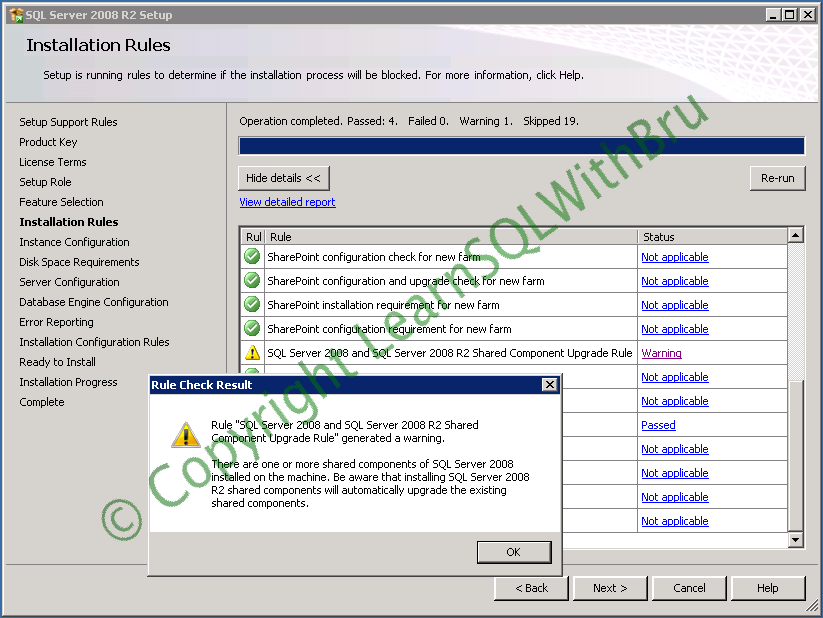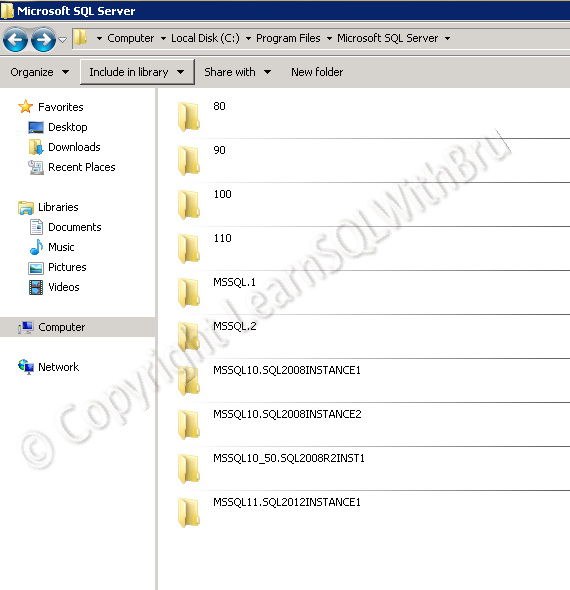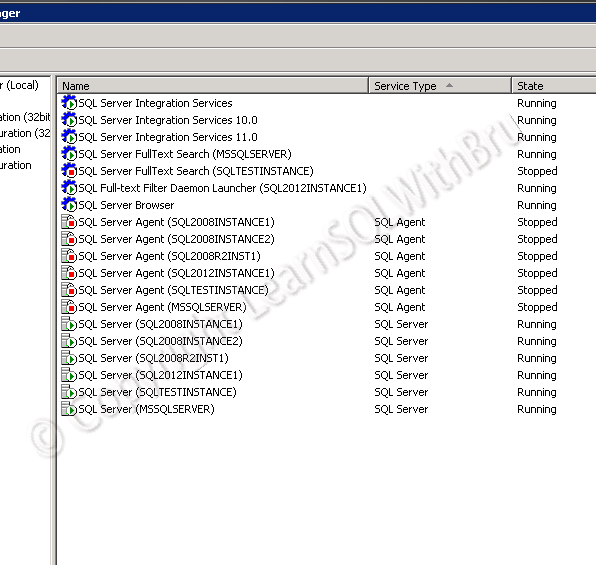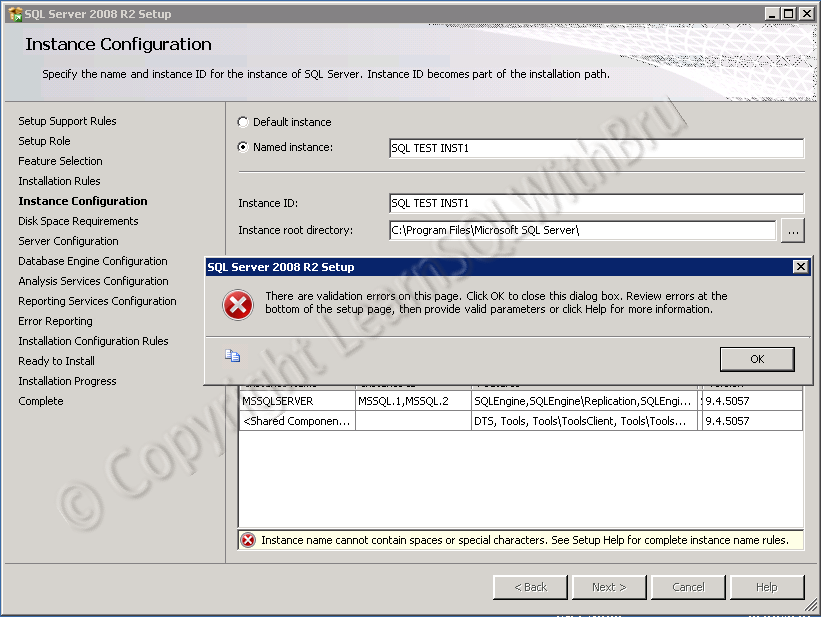If you are planning to install SQL Server 2008 R2 as an additional Instance on a machine where SQL Server 2008 exists, then you have to keep in mind some implications. Though nothing fatal might occur in the first place, but there would be some changes depending on what settings / features that are selected while Installing SQL Server 2008 R2.
When installing the first instance of 2008 R2, you would come across the below warning message. The message indicates that the Shared Components will be upgraded to SQL Server 2008 R2.
What this means to you is, when you are done performing the installation, the shared components of SQL Server 2008 will not be available any more. Some of the shared components include.. SSMS, BIDS, Profiler, Integration Services, SQL Server Browser etc..
To avoid this scenario, the way out is not to choose Shared Components in the Installation step where you select the features list, that way SQL Server 2008 R2 instance will be installed but the shared components will still be of version SQL Server 2008.
Do you like this site? Like our FB page @ Facebook.com\LearnSQLWithBru so that, you know when there is a new blog post
— Bru Medishetty






